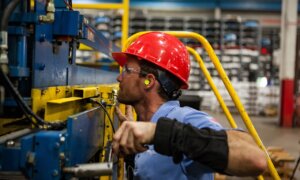
In the first part of our drone editorial series, we explained the connection between kites and drones, how did the military influence their appearance and what is the main difference between UAVs and drones. Now, we are going to see how do drones capture video stable enough for your viewing pleasure, despite extreme vibrations and what image stabilization solutions are there.
With the making of AR Parrot, DJI Phantom series, Xiaomi drones, we are entering the age of aerial photography and videography, capturing media from angles and distances that seemed impossible for the average user before. In order to do that, rotary drones (the ones that make perfect camera platforms) are equipped with multi-rotors that help them hover and maneuver in any direction. They can hover enough time to take a selfie or a great wedding shot or angle themselves in such a way as to record astonishing videos of a city.

Art comes with a price, though. When you use your smartphone to record a video, you will end up with a pretty good end result thanks to video stabilization software or optical stabilization. But the handshake associated with smartphone cameras is not the same thing as the high frequency vibrations identified in drones.

Ultra-light drones, the ones usually available for the average consumer, are constantly buffeted by air currents. Propellers are added to keep them steady and afloat, working as extra fail-safes, but as they do so, the motor is further pushed, vibrating furiously. The image recorded is bound to be shaky, so manufacturers are using 3-axis gimbals to enhance the image quality.
Is that enough? Drones are a balancing act between batteries, motor weight, propellers, gimbals; now, it has become increasingly obvious that future performances need almost weightless technology – software, instead of gimbals.
Electronic image stabilization software is the solution to wobbly videos. For example, Ikena ISR is MotionDSP’s answer to military drone imaging problems; it’s able to clean them up in real-time, using CUDA and multi-frame algorithms, but as it does so, it strains the GPU and increases power consumption.

The only way to capture this guy surfing from above is by investing in EIS. / Image by Julie Macey
Is there a way to avoid all this and, by doing so, extend drones’ flight time? The answer is yes, the “how” is the tricky part.
Companies like ReelSteady believe in the power of stabilization after video recording, by using plug-ins for programs like Adobe After Effects. In theory, it’s a good idea, but you would need license, processing power and of course, time on your hands. To quite a few, that’s the opposite of practicality.
The obvious, better alternative seems to be a built-in solution. FotoNation introduced a concept, called Digital Gimbal, ensuring rock-solid video that is practically immune to platform motion and vibration. The concept is powered by their IPU (Image Processing Unit) , a piece of hardware that is also essential for autonomous flying, thanks to its computer vision-oriented engines.
Keep reading to understand how can drones become really autonomous in the future. In the next part of our series, we’ll discuss how we can make drones smarter, help them understand what they see, and why is “sense-and-avoid technology” crucial for the future of drones.
*This article is written as part of an editorial series presented by FotoNation.
Follow TechTheLead on Google News to get the news first.






